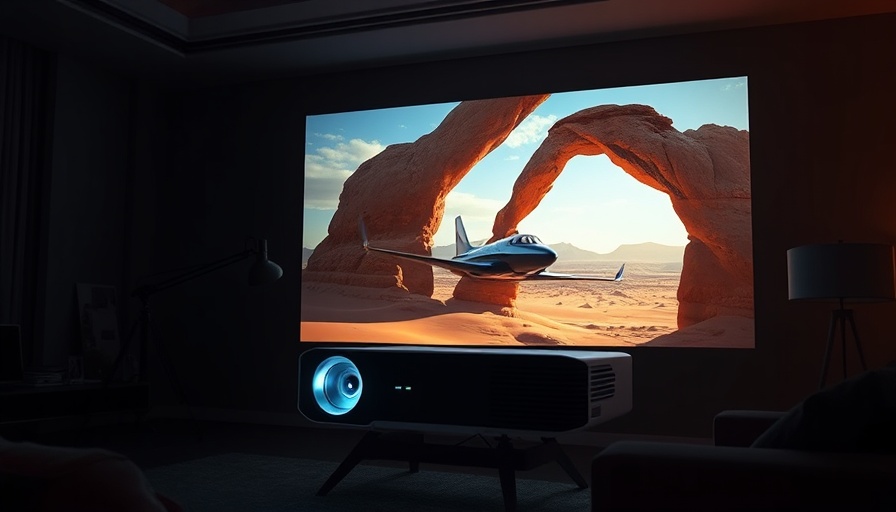
A New Era of Home Entertainment with AI Projectors
Artificial Intelligence (AI) is not just a buzzword; it’s reshaping our entertainment experiences, particularly with the evolution of home projectors. The latest developments in this technology have significantly enhanced convenience and immersion in home cinemas, making quality viewing more accessible to everyday users. AI-driven projectors are now equipped with ambient-adaptive systems that fine-tune color and brightness based on the surroundings, ensuring that a stunning visual experience is possible in any lighting condition.
Dynamic Features Enhancing Your Viewing
Leading the revolution, companies like BenQ are at the forefront, launching projectors that automatically adjust settings in real-time. The integration of AI technology means these projectors can sense the ambient light and adjust image brightness and contrast accordingly. For instance, the new BenQ W2720i boasts an AI-powered Cinema Mode that ensures movies look consistent with the director's vision, regardless of room conditions. This capability isn’t just a luxury; it solves the common user frustration of having to manually adjust settings when the lighting in the room changes.
Transforming Homes into Cinematic Experiences
Modern AI projectors are designed to elevate our home cinema setups. Beyond visual enhancements, they're beginning to integrate with smart home systems. Users can control projectors through voice commands, automating the whole movie night process. Picture this: you walk into your living room, you say, “Hey Google, start movie night”—the lights dim, the projector screen lowers, and you’re ready for your cinematic experience without lifting a finger. The convenience and immersive capabilities of AI projectors are redefining the way you enjoy movies at home.
Future Capabilities of AI Projectors
As we look ahead, the potential for AI projectors seems limitless. Future innovations may include capabilities like advanced facial recognition to tailor content to viewer preferences, and even augmented reality features that merge the cinematic and real worlds. These advancements suggest that projectors will not only enhance passive viewing experiences but transform them by promoting interactivity and personalization.
Insights from Industry Leaders
According to various analysts and companies in the field, AI-driven home cinema technology is moving towards enhancing image quality through deep learning algorithms that can upscale video resolutions to 4K and beyond. For example, AI can analyze characteristics of lesser quality films and optimize the images, providing viewers a superior visual experience even with older content. This capability adds value to the entire entertainment ecosystem by offering a solution for those interested in classic films that are not available in high definition.
Common Misconceptions About AI in Home Cinema
Despite the promising advancements, there remain concerns among traditionalists regarding AI’s ability to deliver authentic images. Detractors argue that automatic adjustments might compromise picture quality. However, with companies like BenQ calibrating their projectors before they reach consumers, we see an effort to bridge that gap – ensuring the final output remains true to the creators' intent while still adapting to the viewers' environment.
Conclusion: Step into the Future of Home Entertainment
Investing in AI projectors transforms your home viewing experience, granting you both quality and convenience. With industry leaders continuously innovating, there's never been a better time to consider upgrading your home theater system. Embrace the future of entertainment and enjoy movies as they were meant to be seen. To explore more about AI projectors and how they can enhance your home entertainment system, keep an eye on emerging technologies and product releases.
 Add Row
Add Row  Add
Add 




Write A Comment